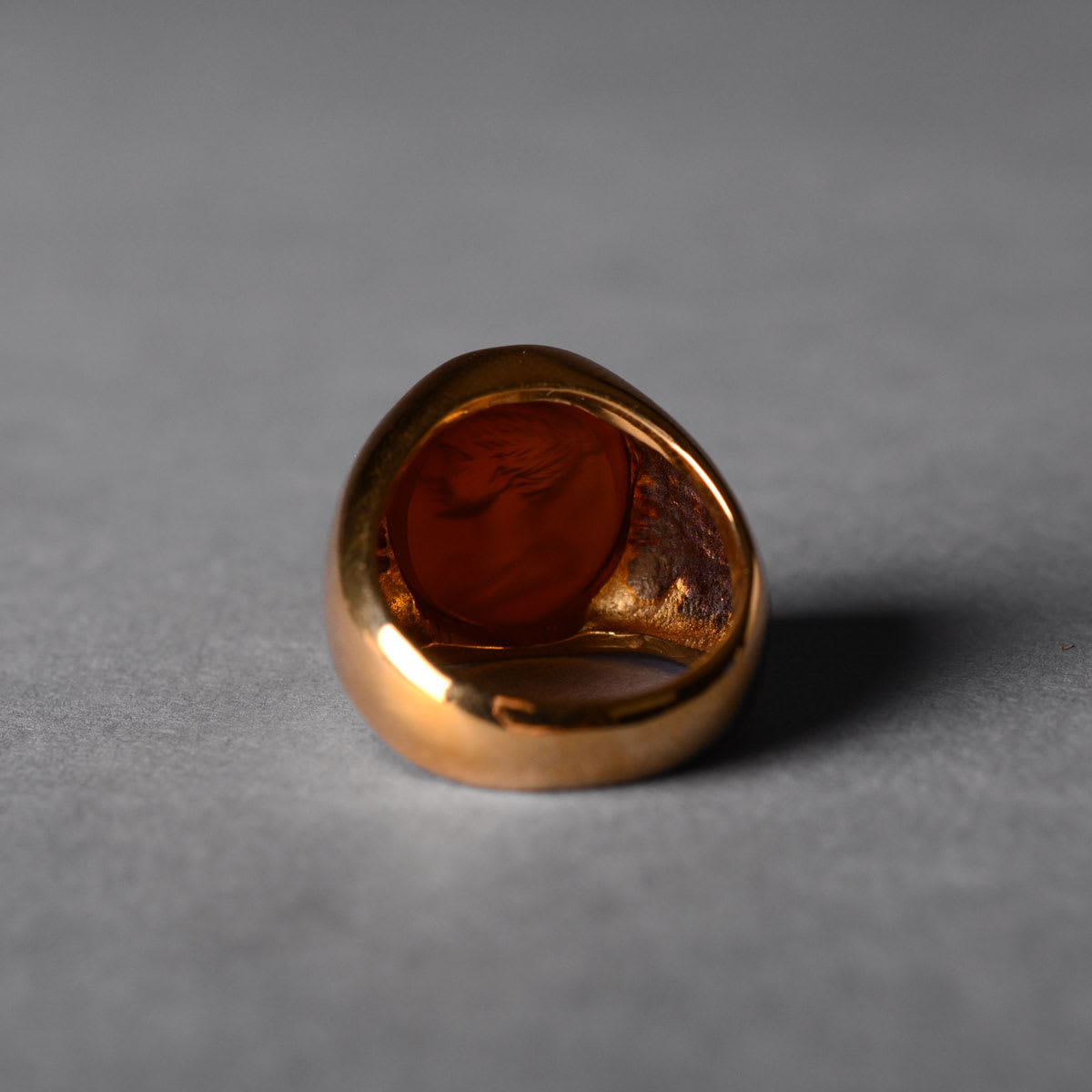Roman Intaglio Depicting a Roman Empress, 100 CE - 200 CE
Carnelian-Gold
FJ.6502
Further images
The art of glyptics, or carving on colored precious stones, is probably one of the oldest known to humanity. Intaglios, gems with an incised design, were made as early as...
The art of glyptics, or carving on colored precious stones, is probably one of the oldest known to humanity. Intaglios, gems with an incised design, were made as early as the fourth and third millennia BC in Mesopotamia and Aegean Islands. They display a virtuosity of execution that suggests an old and stable tradition rooted in the earliest centuries. The tools required for carving gems were simple: a wheel with a belt-drive and a set of drills. Abrasives were necessary since the minerals used were too hard for a metal edge. A special difficulty of engraving intaglios, aside from their miniature size, was that the master had to work with a mirror image in mind.
The portrait on this intaglio strongly resembles that of Faustina Junior, the youngest daughter of emperor Antoninus Pius and the elder Faustina. She was at first betrothed to L.Verus following the wish of the emperor Hadrian. Upon his death, her father chose for her his wife's nephew Marcus Aurelius; a very good choice since he was both a fine man and soon-to-be emperor. Faustina was given the title of Augusta on the birth of her first child in A.D.146; and was to have many more children including the future emperor Commodus. Her profile on this lovely intaglio shows an attractive woman with a strong personality, set against the brilliant natural beauty of the fiery carnelian.
The portrait on this intaglio strongly resembles that of Faustina Junior, the youngest daughter of emperor Antoninus Pius and the elder Faustina. She was at first betrothed to L.Verus following the wish of the emperor Hadrian. Upon his death, her father chose for her his wife's nephew Marcus Aurelius; a very good choice since he was both a fine man and soon-to-be emperor. Faustina was given the title of Augusta on the birth of her first child in A.D.146; and was to have many more children including the future emperor Commodus. Her profile on this lovely intaglio shows an attractive woman with a strong personality, set against the brilliant natural beauty of the fiery carnelian.





